
Expert Tips on How to Buy Furniture
Here’s our official guide on how to buy furniture for your own home on any budget.
Updated
Over the past ten years at Clearing Farm, we’ve examined countless furniture companies for living rooms, kitchens, bedrooms, entryways, and outdoor areas. We’ve tried out numerous brands and have put this buyer’s guide together based on our collective knowledge and experience. We hope it helps you buy the best high-quality and premium goods without hurting the bank.
Live without furniture first.
Before you buy furniture or even think about designing a space, there is no better way to understand what and where you need furniture than to live in your space with no furniture. If you do this for about two weeks, the space will speak to you and you’ll see where things naturally need to go based on your lifestyle and habits. You’ll find a spot in your kitchen where you always seem to want to eat. You’ll get a sense of the best place in your bedroom for your dresser. You’ll feel where mirrors need to go and which walls need some artwork. A protip here is while you still don’t have furniture, use cardboard boxes as temporary tables, shelving, etc., so you can truly feel through the space and what it would be like to have it furnished.
Enjoy learning about and exploring different fabrics.
If you’re new to buying furniture, you might find yourself overwhelmed by all the different upholsteries, fabrics, and materials you can choose from. Instead of feeling overwhelmed by all the choice, either just ask what the most popular one is (usually a good bet) or just spend your time thinking about which one you really want and enjoy the process.
Used furniture is the best deal and is often high-quality.
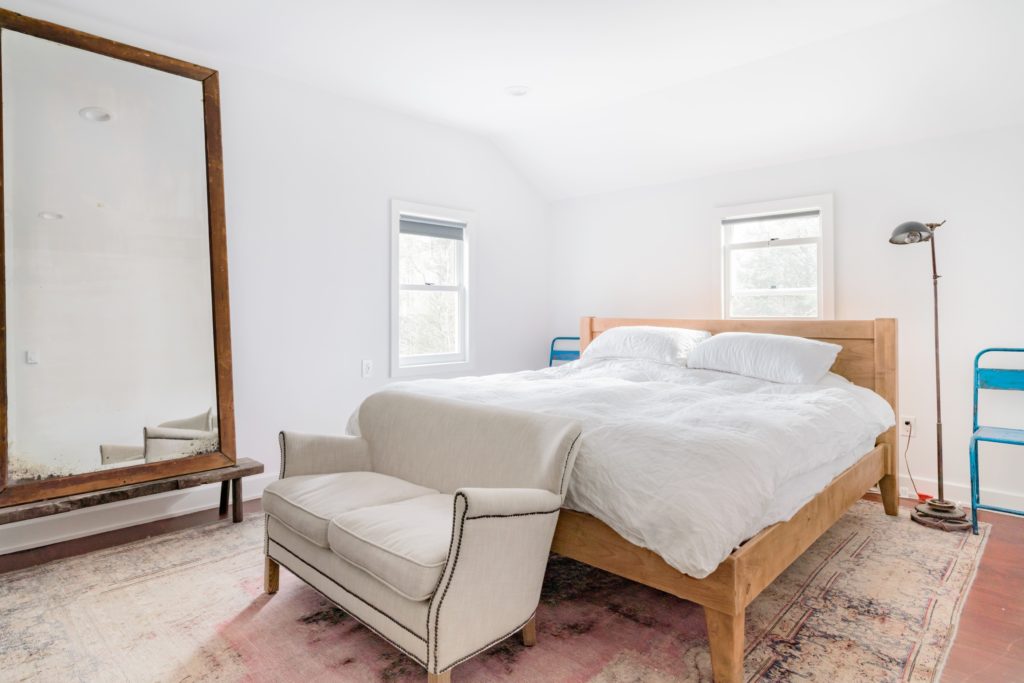
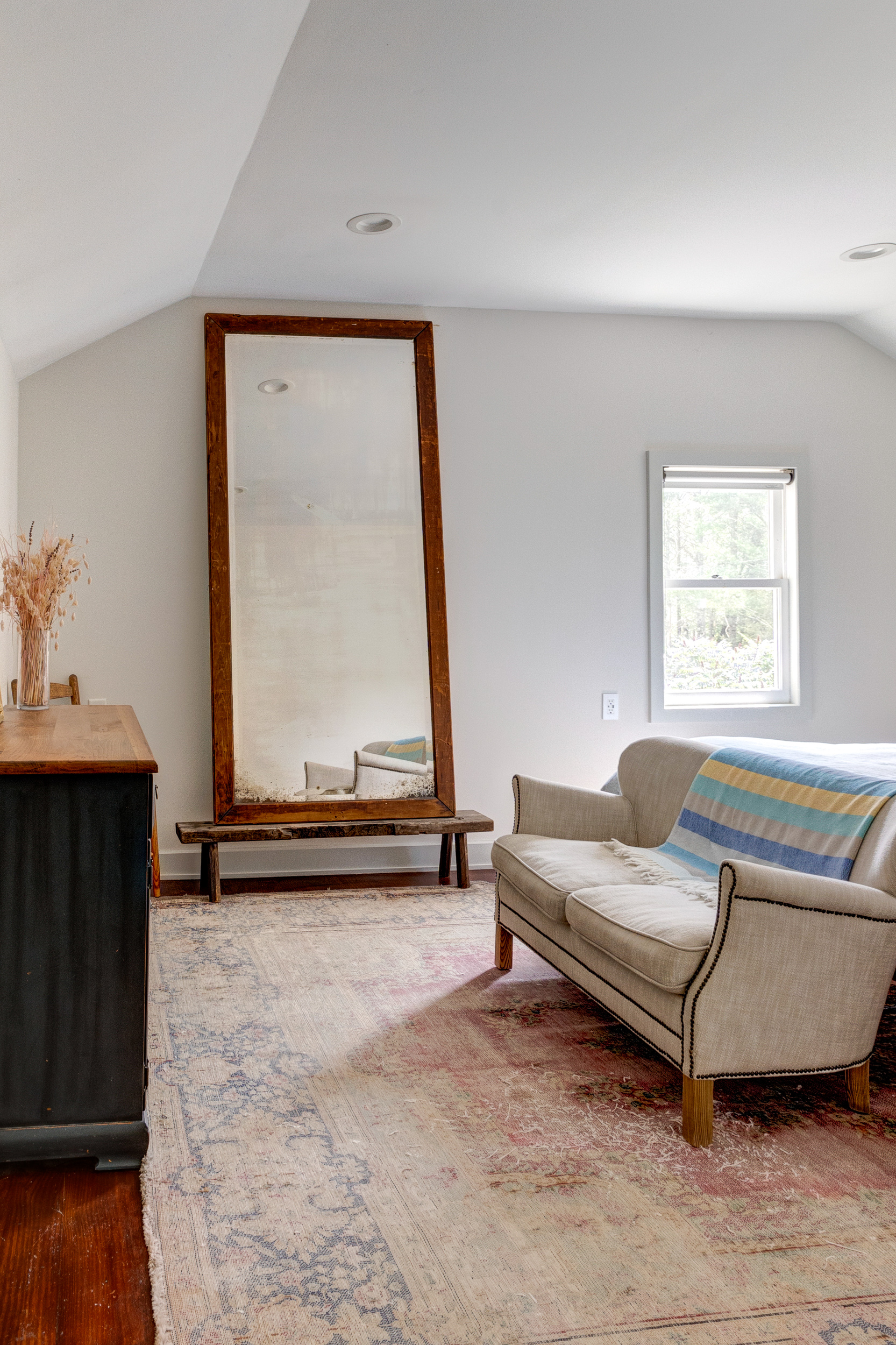
Whenever possible, we like to buy furniture used from antique shops, estate sales, and Craigslist. Used furniture is how you get the best deal for high-quality stuff. It will take more time to buy used, but aside for a few basics, not rushing into buying essentials — such as a coffee table — works to your advantage. Explore and wait for the right pieces to come to you; don’t push yourself into buying stuff just because you think you need it.
So to reiterate: If you’re looking to buy furniture cheap, head to your antique store now for high-quality items.
Avoid cheap furniture.
Cheap furniture has extreme long-term costs to your wallet, the environment, and local economies. If you buy cheap furniture, it will most likely break, or you’ll throw it away in due time (particularly if you are going to move). Budget is obviously a top concern, but the hidden irony is that buying a $200 dresser on sale is going cost you more in the long run than spending $1,000 on one that’s made properly. Moreover, if affordability is an issue, buy your furniture used rather than cheap and new.
Seriously, avoid cheap furniture.
Here’s a story that will be relevant to almost anyone. At one point in the Clearing Farm project, we needed bunk beds, as we had to host a huge party of people who didn’t want to sleep on air mattresses. We found some good bunk beds made in the United States, and we had our credit card out about to order them, but the $5K price tag for a set of two bunk beds made us sick to our stomach. It would create significant debt for a year. So we said “whatever” and instead bought two bunk beds on Amazon that together cost less than $500. At first, we felt good about the decision! Amazing—we saved money, and the reviews were positive on the product; what could go wrong?
Here’s what went wrong: We spent five hours unpacking and assembling those bunk beds. Then another five hours figuring out how to make them feel less flimsy by bolting them to the wall. Then another two hours disassembling them and making them work as regular bed frames. And then another four hours removing them from our house and putting the parts in storage. There is a chance we’ll use those parts again, but most likely they will end up in a landfill, and we’ll be forced to build our own bunk beds or buy them from a reputable artisan.
So because we cut corners, we ended up wasting a great deal of our time, destroying our environment by adding more junk to it (the product came wrapped in pounds of plastic), and wearing out the product in a year.
We should have admitted we couldn’t afford bunk beds. But we needed to house more people. The solution? Just lay a bunch of mattresses on the floor side-by-side and spend no money at all. Then, when we can afford it, let’s vet real companies or think about how to build the bunk beds ourselves. But we were so caught up in the idea of having to host so many people, we bought the cheapest solution out there instead of thinking about the smartest solution.
This applies across the board. We have two friends who at age 23 were making the same salary of about $30K. One of them spent $10K on furniture for their first apartment over two years, and the other spent about $1K the first month after moving in. Ten years later, the friend who spent $10K still has all the same furniture and it looks brand-new, while the other friend threw it all away—what’s more, the person who bought the expensive furniture knew that all of the products maintain a high resale value, thus making it a liquid asset.
We understand that not everyone has $10K to spend on furniture. But besides a mattress and a basic table, most furniture purchases are inherently superfluous, and our advice is that if you aren’t going to buy something used, you should simply not buy anything at all, or wait until you have enough money to invest in a piece of furniture that won’t quickly end up in a landfill.
Expensive does not mean high-quality.
That said, a high price tag does not mean the product is high-quality, though it is an important indicator. But the market is so littered with faux luxury that you need to be wary of it. To truly determine if a “luxury” item is high-quality, you need to dig deep into what the product is made of, where it comes from, and who made it. Here are a few tips:
- Always find out what the furniture is made of. Furniture made from solid wood is always a good bet. Solid wood is usually heavier. Also, products made from leather, cotton, and rubber foam are usually signs of high quality.
- Where is the product from? We try to avoid furniture made in China, but we still end up with some pieces from there.
- What sort of features signify quality? Look for joints with mortise, tenon, and dovetails.
- How long does it take to ship? Some high-quality furniture is not waiting in stock at a warehouse. It’s made to order and will require several weeks, sometimes months, to arrive at your doorstep. The other great thing about buying made-to-order furniture is that the sales specialist will likely be able to walk you through the answers to all the questions above so you can confirm it’s a high-end product.
Which furniture companies do you recommend?
Furniture companies are like bands. Just like musicians have a plethora of songs — some of which are great, others which are not so good — furniture companies have a plethora of product inventory that ranges from excellent to great to meh. So when shopping for furniture, it’s important to dive deep into each company’s catalog, because while you might not superficially jibe with their brand image, they could have the perfect product for you deep within their catalog.
For example, our personal taste at Clearing Farm is antithetical to IKEA and fast furniture in general. But we still use IKEA from time to time, because within their vast library of products there are some pieces that just work when you’re in bind — such as the TARVA bed frame, with its elegant design, cheap price point, and use of natural wood. (If you buy the Tarva bed frame, you should know that the assembly instructions and kit are a bit weird. We often use our own tools and parts to put it together and even modify the build of the product.)
That’s why when furniture-shopping, we encourage you to browse not so much by brand, but by product. The question isn’t so much, “Should I shop at Restoration Hardware?” as it is: “Does Restoration Hardware have a unique piece that perfectly fits my space, budget, and design sensibility?”
Whenever possible, we like to buy furniture made in the United States. We want our new furniture to be passed down several generations. We want it to be made in a sustainable and ethical way. We encourage you to look into local artisans and antique stores in your area, but Room & Board, Olde Good Things, Maiden Home, Design Within Reach, Soho Home, and Rejuvenation are great starting points for your furniture-buying journey. It’s worth stating again, though: You need to look into each product individually to learn about its finer details.
You can find great furniture in the trash.
This might sound gross, but recycling “junk” is much less gross than buying junk brand-new. We have equipped Clearing Farm properties and our personal homes with pieces we have found on the streets of New York City and from junkyards in upstate New York. We find that in the affluent areas of NY, people often throw out high-quality furniture that is salvageable. It happens in upstate junkyards as well.
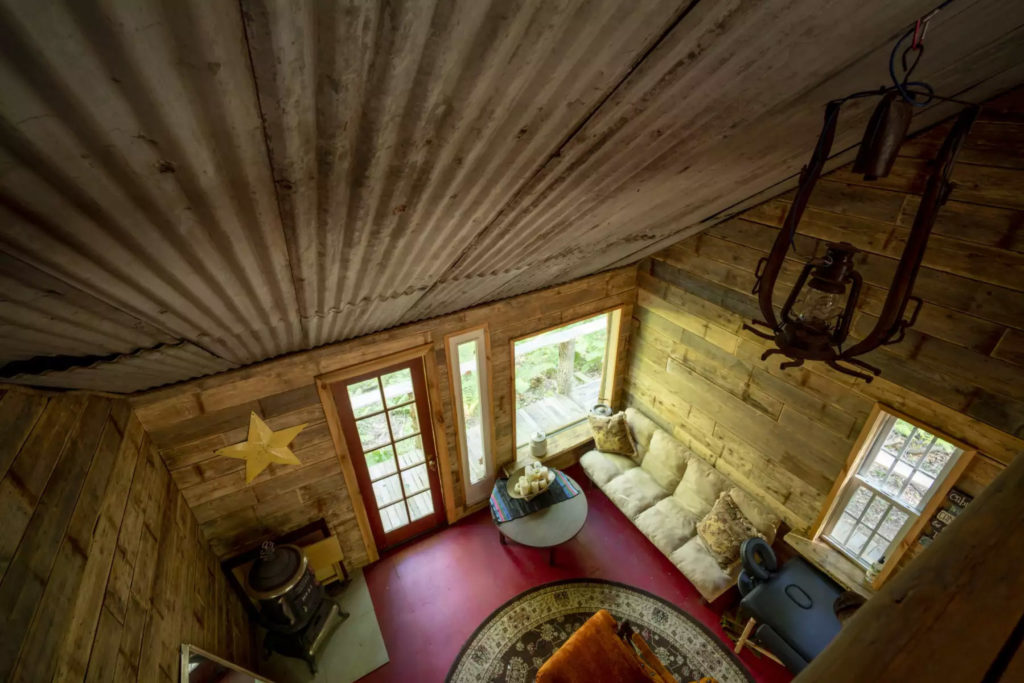
Not only have we used other people’s throwaway furniture in our homes, we also built an entire cabin using only building materials and furniture that was thrown away. Our recycled cabin, so called because all the materials were sourced from junkyards, was built 100% from so-called trash — from the couch to the hot tub to the windows. Everything was sourced from free recycled materials.
Scavenging through junkyards isn’t for everyone, but the bigger picture applies to everyone: If you have time and can think creatively, you can turn junk into gold.
Be open and try a bunch of different layouts/configurations with your furniture.
Whether you’re buying furniture for a small studio apartment or furniture for a large house, it will take you a couple tries to figure out the optimal arrangement for your furniture. For example, when we’re designing our farmhouse bedroom, which was just 300 square feet in size, we moved our bed frame into three different locations before we decided what the best location was. There are so many real-world factors in how you use a space that it just takes experimentation with different layouts before you find the right one.
Consider how long you’re going be in this space.
Custom furniture fitted to your exact space is an investment that pays dividends over and over again. There is nothing quite like buying a custom sectional sofa that perfectly fits into your living room, or having a custom closet area built for your space. It’s worth taking the luxury route to ensure your home feels and functions right for you. Still, if you’re renting your place or plan on moving within three years, you probably don’t want to order anything too custom-designed.
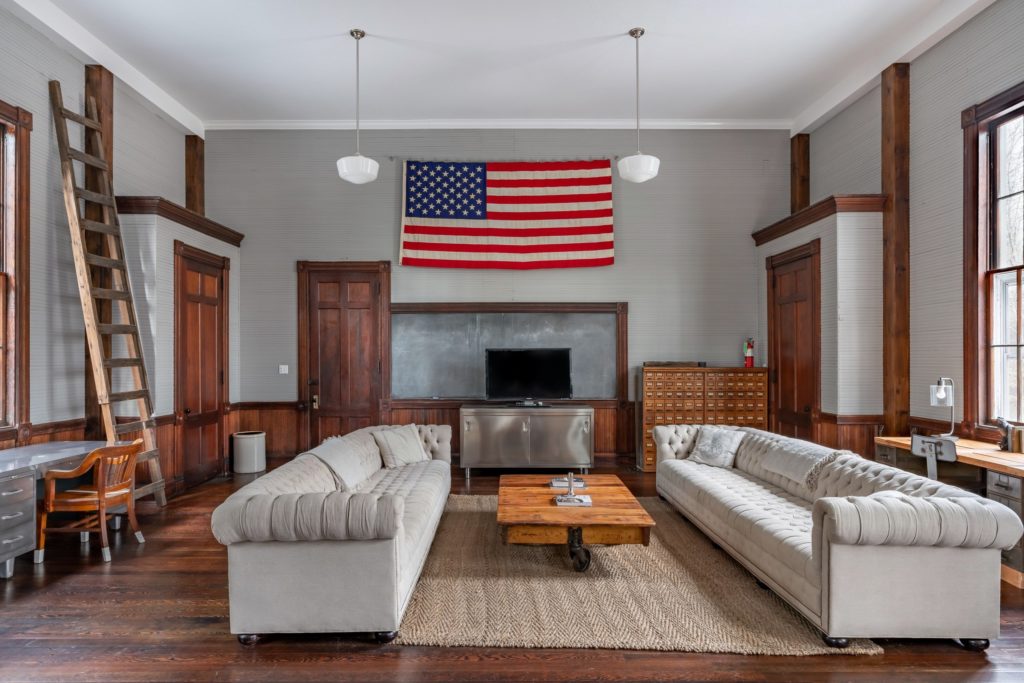
Here are the rules of thumb. If you’re renting, buy furniture for your space but also imagine how it might work in a different home or research the resale value. If you own your home, try to hold out until you can afford to do something custom; even if you end up selling your home, custom furniture can help sell it by using the space in the best possible way, and if it’s truly a great fit you can often sell the furniture as well to the new buyer.
Pay close attention to the photos; better yet, visit a brick-and-mortar store.
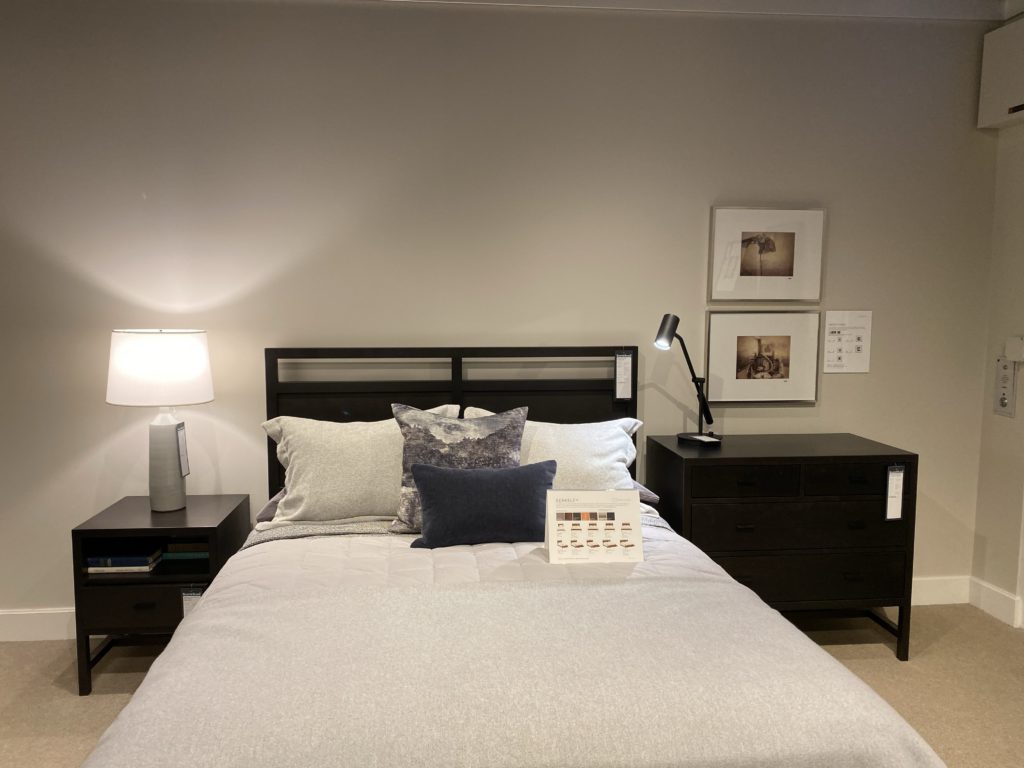
Visiting a showroom at brick-and-mortar store is the best way to understand the essence of the furniture you’re buying. It’s almost impossible to get a sense of all the nuances of different types of wood, metals, colors, and even the sizes of furniture from the virtual projection of a screen. If you can’t visit a store directly, our advice is always to find as many photos of the furniture as possible and try to find photographs of it in real spaces, not the beautiful Photoshopped interiors typically found in print catalogs and online websites. We love retailers that show us these photos directly on their website, as it’s normally a sign that they have nothing to hide. (It’s also why, for instance, in our cozy bedroom post we have iPhone photos of bedrooms that aren’t all so spruced up so you can get a more realistic understanding of the rooms.)
The other net-positive reason to visit a furniture store is that even if you don’t buy anything, they are great sources of inspiration. Showrooms will fill your brain with ideas and help you better carve out your own design sensibility.
When it comes to couches, do your best to try those out in-person.
While we always recommend trying to visit brick-and-mortar stores to truly see your furniture purchases before you make the investment. This is especially true with your couch. Testing out the comfort level, the cleanliness level of the fabric and even just how the dimensions play out to the human eye at scale is vital to do before you buy an expensive couch.
Hire an interior designer.
If you’re serious about the interior design of a project and it’s a big space, it’s probably worth hiring a professional to help you bring your ideas to life. Even our friends with the most seasoned eyes for design confess that by the time the project is completed, the process was too time-consuming and they wish they had just brought in an expert from the start. Think of an interior designer not just as a designer, but as a project manager and procurer of furniture, materials, and fabrics. They do so much of the legwork. On top of that, they have so much experience with what does and does not work. They can also order furniture at special trade prices that can help reduce costs.
